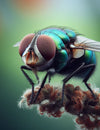Introduction:
Rice is a staple food for a significant portion of the global population, making its cultivation crucial for food security. However, rice crops are susceptible to various pests that can significantly impact yield and quality. To ensure a bountiful harvest, farmers need to employ effective pest control measures. In this blog post, we'll explore practical strategies and pest control products to help safeguard your rice crop.
Identifying Common Rice Pests:
Before diving into pest control methods, it's crucial to identify the common pests that pose a threat to rice crops. Some of the most prevalent rice pests include the Brown Planthopper, Stem Borer, Rice Hispa, and Rice Leaf Folder. Each of these pests can cause extensive damage if not addressed promptly.
Integrated Pest Management (IPM):
Integrated Pest Management is a holistic approach that combines various strategies to control pests while minimizing their impact on the environment. Farmers should incorporate the following components into their IPM plan:
Cultural Practices:
- Crop Rotation: Rotate rice with other crops to disrupt the life cycle of specific pests.
- Field Sanitation: Remove crop residues and weeds to eliminate potential breeding grounds for pests.
Biological Control:
- Introduce natural predators and parasites to control pest populations. For example, releasing predatory insects like ladybugs can help control aphids.
Mechanical Control:
- Use physical barriers like nets to prevent pests from reaching the crop.
- Employ mechanical traps to capture and reduce pest numbers.
Pest Control Products:
While cultural, biological, and mechanical methods play crucial roles in pest management, the use of pest control products is often necessary for effective control. Here are some key pest control products commonly used in rice cultivation:
Insecticides:
Insecticides such as neonicotinoids, pyrethroids, and organophosphates can effectively control pests like the Brown Planthopper and Rice Leaf Folder. Following recommended application rates and timings is important to minimize environmental impact.
Herbicides:
Herbicides help control weeds, preventing them from competing with rice plants for nutrients and sunlight. Common herbicides include glyphosate and pre-emergence herbicides.
Fungicides:
Fungicides are crucial for controlling fungal diseases that can devastate rice crops. Examples include azoxystrobin and tricyclazole, which target diseases like blast and sheath blight.
Biopesticides:
Biopesticides, derived from natural sources like bacteria and fungi, are an eco-friendly alternative. They can be effective against certain pests without causing harm to beneficial organisms.
Best Practices for Using Pest Control Products:
- Always follow recommended dosage and application guidelines.
- Rotate pest control products to prevent the development of resistance.
- Consider the potential impact on non-target organisms and the environment.
- Regularly monitor pest populations to adjust control strategies as needed.
Conclusion:
Effectively managing pests in rice cultivation requires a comprehensive approach that combines cultural practices, biological control, mechanical methods, and judicious use of pest control products. By implementing an Integrated Pest Management plan and incorporating the right pest control products, farmers can safeguard their rice crops and ensure a stable and abundant harvest, contributing to global food security.



